Introduction: AI, Michelangelo, and the Controversy
Is AI the New Michelangelo? An In-Depth Look at AI Canvas Prints
Artificial Intelligence (AI), the groundbreaking technology disrupting every field from healthcare to transportation, has set its sight on the creative realm. The confluence of AI and art has given birth to a compelling, albeit controversial, form of expression – AI Canvas Prints. Yet, the rise of AI in art has sparked a heated debate: Is AI the new Michelangelo?
Michelangelo: The Indelible Impact on Art
Michelangelo: A Brief Biography
Renowned Italian sculptor, painter, architect, and poet, Michelangelo di Lodovico Buonarroti Simoni, commonly known as Michelangelo, has left an indelible mark on the world of art. Born in 1475 during the High Renaissance, his extraordinary talent has shaped Western art and continues to inspire artists centuries later.
Michelangelo’s Impact on Renaissance Art
Michelangelo’s contributions to Renaissance art were profound and transformative. His works, such as the breathtaking ceiling of the Sistine Chapel and the intricate sculpture of David, are iconic masterpieces that embody the spirit of the Renaissance.
His revolutionary technique of depicting the human form in its raw, expressive state demonstrated a deeper understanding of anatomy and emotional depth, which was unprecedented at the time. Michelangelo’s ability to capture the human experience in stone and paint set a new artistic standard, distinguishing him as a true maestro.
-
$160.00 – $200.00This product has multiple variants. The options may be chosen on the product page
-
$160.00 – $200.00This product has multiple variants. The options may be chosen on the product page
-
$160.00 – $200.00This product has multiple variants. The options may be chosen on the product page
-
$160.00 – $200.00This product has multiple variants. The options may be chosen on the product page
The Techniques and Style of Michelangelo
Michelangelo’s unique style is characterized by his extraordinary attention to detail, grand scale, and emotional intensity. His ability to imbue life and movement into stone and paint showcased not only his technical mastery but also his deep understanding of human emotions.
His use of the ‘terribilità’ (an intense emotional power), combined with his realistic portrayal of the human form, produced works that were profoundly emotive and spiritually captivating. From the tense muscular form in the ‘David’ sculpture to the divine depiction in the Sistine Chapel, Michelangelo’s techniques and style continue to resonate with artists and art enthusiasts alike.
Michelangelo’s Influence on Contemporary Art
Even in the modern art world, Michelangelo’s influence is palpable. His techniques and approach to conveying emotion have been adopted and adapted by countless artists. His vision for expressing the human experience through art set the precedent for subsequent art movements, including Romanticism and Expressionism.
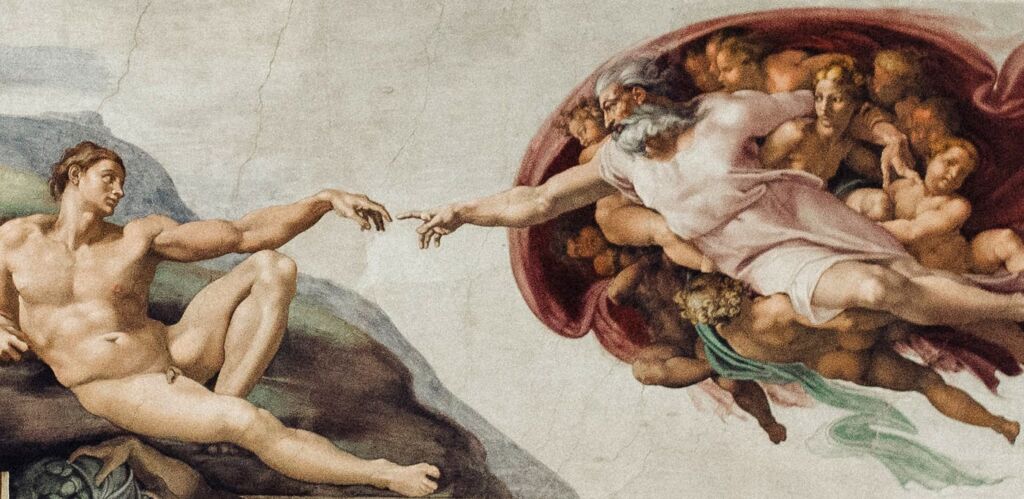
AI: The Rising Star in the Art World
Brief History of AI in Art
AI’s foray into art began in the latter half of the 20th century with the advent of computer-generated art. With the advent of more sophisticated AI technology such as machine learning and neural networks, the AI art movement has seen an explosive growth. Today, AI’s influence in the art world is undeniable, making its mark in various forms such as digital art, interactive installations, and particularly, AI canvas prints.
Role of AI in Today’s Art
AI has dramatically altered the way we create, consume, and perceive art. An AI art generator from a photo can produce intricate and unique pieces of art, breaking the barriers of traditional art creation. Artists today utilize AI to explore new frontiers of creativity, bringing to life visuals that were previously unthinkable.
Case Studies: Famous AI-created Canvas Prints
AI-created art is gaining recognition and acceptance in the mainstream art community. One notable example is ‘Portrait of Edmond de Belamy’, an AI-generated canvas print that sold for a staggering $432,500 at Christie’s auction. The work, generated by an AI model trained on 15,000 portraits, demonstrated the potential of AI in creating valuable and aesthetically pleasing art.
Impact of AI on Democratizing Art
AI art generation has the potential to democratize art, making it more accessible to people without formal artistic training. It provides a platform for anyone to create and appreciate art. Moreover, AI art generation services such as those offered on NFT54 can turn photographs into stunning AI prints, making personalized art accessible to all.
AI’s potential to transform photos into artwork is further demonstrated in this unseen process of turning AI pixels into art. The process is akin to a dance between technology and creativity, resulting in a unique blend of art that pushes the boundaries of traditional mediums.
AI’s rise in the art world is not without controversy. However, its potential and influence are undeniable. Is AI the new Michelangelo? As we delve deeper into the comparisons between AI and the Renaissance master, we invite you to explore the pros and cons of AI canvas prints and consider the future of art in the age of AI.
The discussion on AI’s role in art is just the dawn of a new era. Whether it’s seen as a tool or an artist, AI has undeniably begun to impact the art world. As we explore the potential of AI as an artist, we need to ask ourselves: Is AI merely mimicking the masters, or is it paving the way for a new form of creativity?
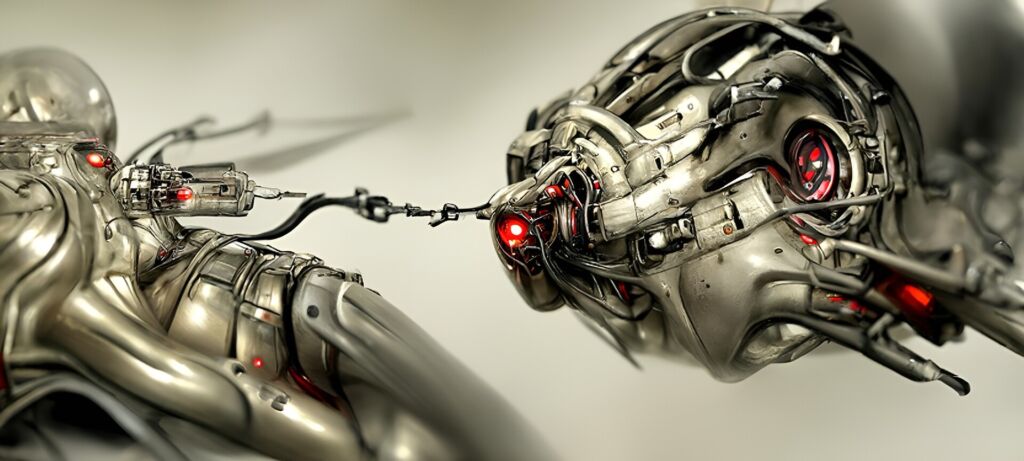
Comparisons between AI and Michelangelo
Art’s evolution has always been closely tied with technology. From the development of perspective during the Renaissance to the advent of photography, technology has often shaped art. Today, AI stands at this intersection, raising important questions about creativity, innovation, and the very nature of art. The comparison between AI and Michelangelo, one of art history’s most revered figures, is both intriguing and contentious.
AI’s Ability to Mimic Michelangelo’s Art
Technologically, AI has demonstrated an uncanny ability to mimic various artistic styles, including those of masters like Michelangelo. An AI art generator can analyze vast databases of artwork and create pieces that resonate with the artistic features of these works.
For instance, AI can generate a canvas print with the grandeur and detailed human forms reminiscent of Michelangelo’s frescoes. It can replicate the technical aspects of his work, the line quality, the use of light and shadow, even the ‘terribilità’ that characterized his style. But can this technological feat of replication compare to the originality and emotional depth present in Michelangelo’s work?
AI and Michelangelo: Creativity and Innovation
In terms of creativity, AI and Michelangelo stand on different grounds. Michelangelo’s genius lay in his ability to bring forth something deeply personal, emotive, and original from his creative wellspring. His works were not just aesthetically pleasing but also emotionally profound and conceptually rich. They were products of a mind that pondered the human condition, spirituality, and the beauty of the physical world.
On the other hand, AI’s creativity is derived from algorithms. It learns from vast databases, identifies patterns, and generates output based on these patterns. It can create visually stunning AI canvas prints that push the boundaries of design and aesthetics. However, AI lacks the personal experience, introspection, and emotive response that inform human creativity.
The process of innovation in AI and Michelangelo also differ significantly. Michelangelo’s innovations were a product of his unique perspective on art, society, and the human condition. His works pushed the boundaries of what was considered artistically possible and aesthetically acceptable during his time.
Conversely, AI’s innovation lies in its ability to learn from vast data sets and create output that humans may not conceive. However, these innovations are bound by the parameters of its programming and the quality of the input data. Without an innate understanding of the concepts it is working with, AI’s creative output remains a product of technological processing rather than an organic creative process.
Ethical Implications of Comparing AI to Human Artists
The comparison between AI and Michelangelo brings forth important ethical implications. The central question is whether AI-created art can be considered equivalent to human-created art. Is it ethical to value AI art that lacks emotional depth or personal narrative, just as we value art borne out of human emotion and experience? Furthermore, can AI truly be considered an artist, or is it merely a sophisticated tool utilized by human artists?
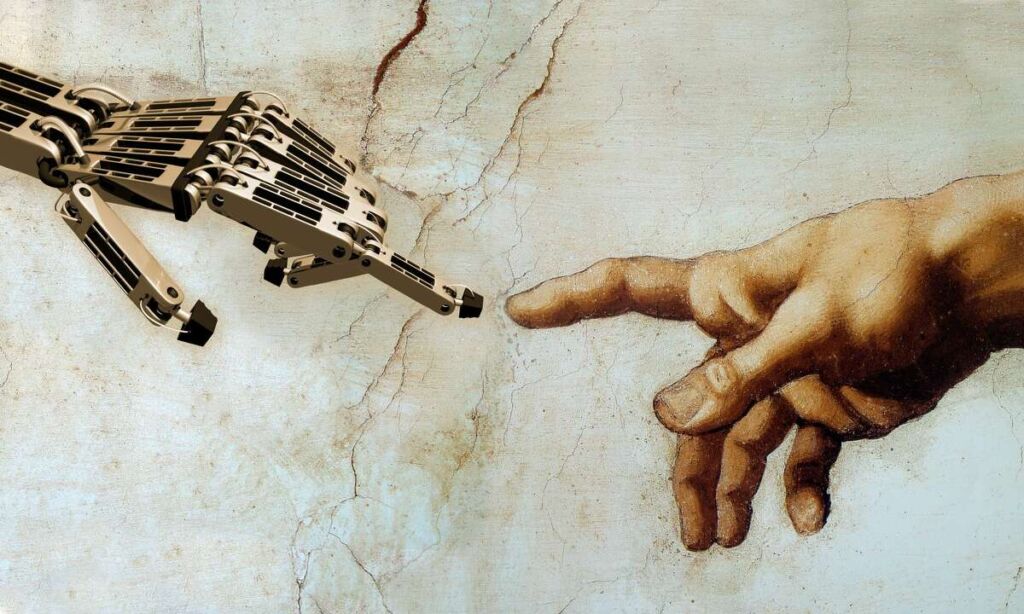
Arguments for AI as the New Michelangelo
Despite the critiques, there are valid arguments for considering AI as the new Michelangelo, especially in the context of AI art’s potential and impact.
AI’s Capability to Generate High-Quality Artwork
One of the primary arguments for AI as the new Michelangelo lies in the sheer quality and variety of artwork that AI can produce. AI can generate stunning AI prints that mimic the styles of various artists, create novel combinations of these styles, or even generate unique styles that have never been seen before.
Expanding the Possibilities of Art
AI’s approach to creating art provides a new lens through which we can explore and expand the possibilities of art. It introduces a new level of complexity and novelty, creating art forms that were previously unimaginable. AI’s unique capabilities allow for experimentation with intricate patterns, colors, and forms that go beyond human capability.
The Impact on Accessibility and Democratization of Art
AI has a significant role in democratizing art by making it more accessible. AI canvas prints can be produced and distributed at a scale that is difficult for a single human artist to achieve. This means that more people can own and appreciate art, regardless of their location or income level.
Moreover, AI art generation services, like those offered by NFT54, allow anyone with a digital image to create a piece of art. This further extends the reach of art, allowing for personal expression and creativity, irrespective of one’s artistic skill level.
Continuous Learning and Adaptation
Unlike human artists, AI can learn and adapt at an astonishing rate. Through machine learning and deep learning algorithms, AI can analyze massive datasets, learn from them, and continuously improve its art generation capabilities. This attribute of continuous learning and adaptation allows AI to evolve and respond to new trends and influences in art, potentially keeping it at the forefront of artistic innovation.
The Role of AI in Art Preservation
AI can also play a significant role in art preservation, a topic closely tied to the legacy of Michelangelo and other historical artists. Through its ability to recreate artistic styles, AI can help preserve the techniques and aesthetics of artists long after they’re gone. It can ensure that the artistic contributions of individuals like Michelangelo continue to influence and inspire future generations.
In conclusion, while AI may not fully replicate the emotional depth and personal experience present in Michelangelo’s work, it offers a unique perspective on art creation, expanding the boundaries of art, making it more accessible, and preserving the legacy of historical artists. Whether or not one considers AI as the new Michelangelo is subjective and largely depends on one’s interpretation of what constitutes art and creativity. Nonetheless, AI’s role in the evolution of art is undeniably transformative and is a testament to the possibilities that lie at the intersection of technology and creativity.
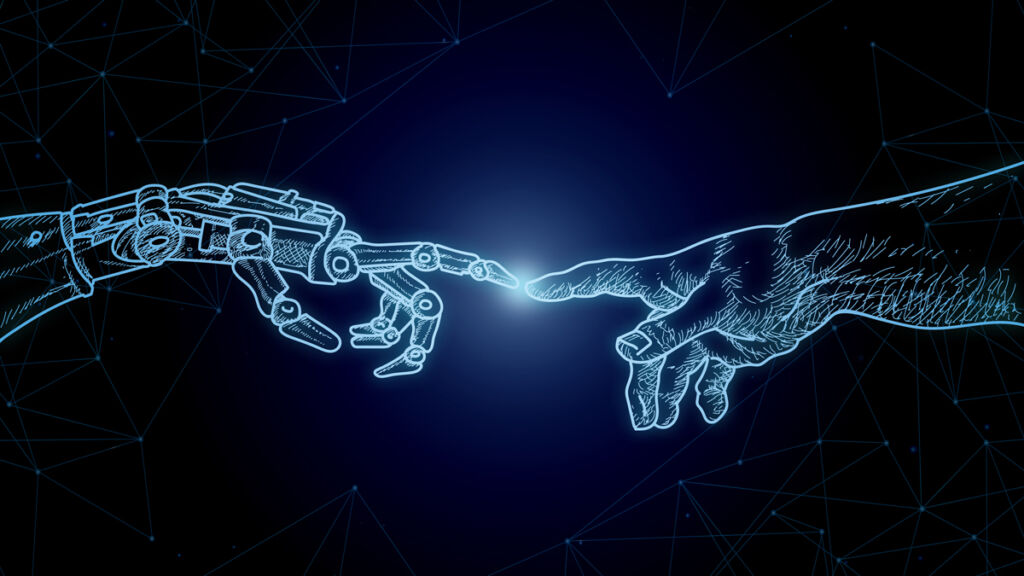
Arguments Against AI as the New Michelangelo
While the impact of AI in the art world is significant, arguments against the notion of AI as the new Michelangelo are equally compelling. These arguments focus on the unique human aspects of Michelangelo’s work that AI can’t reproduce and the limitations of AI in creating art.
Unique Human Aspects in Michelangelo’s Work
Michelangelo’s work, like many great works of art, is deeply rooted in the human experience. His understanding of human anatomy, combined with his ability to evoke powerful emotions through his work, is a testament to his remarkable talent and humanity.
His works were not merely visual representations but also deep emotional and spiritual expressions. They were his responses to the world around him, influenced by his personal experiences, the sociopolitical climate, and his spiritual beliefs.
AI, on the other hand, lacks this emotional depth and personal experience. While it can mimic the style and technique of Michelangelo’s work, it cannot replicate the emotional resonance, the soul, that characterizes his art.
Limitations of AI in Creating Art
Despite its capabilities, AI has inherent limitations. AI art is driven by algorithms that learn from pre-existing data. This means that the artwork it generates is fundamentally derivative. It can mimic styles and combine elements in novel ways, but it cannot create from a void, cannot draw from personal experience or emotions – because it has none.
Furthermore, AI is limited by the quality and variety of the data it is fed. If the input data is biased or limited, the output will reflect these limitations. For example, if an AI art generator is trained only on Michelangelo’s work, it will only generate art that resembles his style and will be incapable of producing something truly original.
Ethical Concerns in AI’s Role in Art
Ethical issues also arise when considering AI’s role in the art world. Is it ethical to give AI the status of an artist? Does AI-created art have the same value as human-created art, given that it lacks emotional depth and personal narrative?
These questions are not easily answered and continue to spark heated debates among art critics, artists, AI researchers, and the public.
Conclusion: The Blend of AI and Art – A New Horizon
The question, “Is AI the new Michelangelo?” invokes a thought-provoking dialogue about the nature of art, creativity, and the role of technology in this realm. Comparing AI with Michelangelo offers us an opportunity to explore the evolving landscape of art in the digital age.
While AI has demonstrated the capacity to produce high-quality, visually stunning AI prints, it lacks the personal experience and emotional depth that imbued Michelangelo’s work with soul. The creativity of AI, rooted in algorithms, differs significantly from human creativity, which is shaped by our experiences, emotions, and consciousness.
On a personal note, while I admire the capabilities of AI in art, I believe that comparing AI to Michelangelo might oversimplify the complexity of both entities. AI represents a new frontier in art, offering novel ways to create and engage with art. However, Michelangelo’s art embodies a depth of human experience that AI, at least currently, cannot emulate.
Looking ahead, the blend of technology and creativity will continue to shape the future of art. AI might not be the new Michelangelo, but it certainly represents a new kind of artist, one driven by algorithms and data. As we continue to explore this new horizon, let’s not forget to value and appreciate the unique, irreplaceable human touch in art.
The dawn of AI in art is an exciting, challenging, and at times, contentious era. Regardless of one’s stance on the role of AI in art, it’s undeniable that AI has opened a new chapter in the art world. As this chapter unfolds, we can only wait and see what marvels it will bring, and perhaps, in the future, we may find ourselves asking again – Is AI the new Michelangelo?
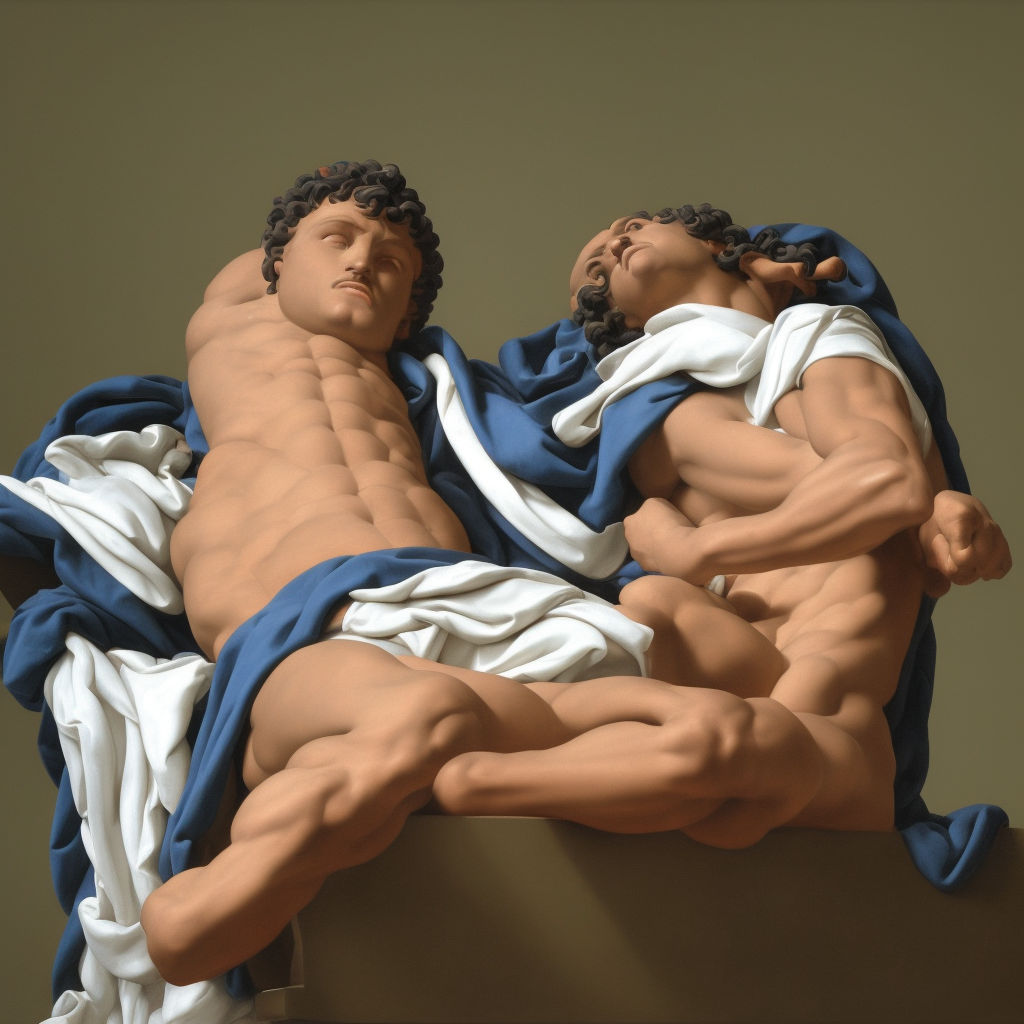
Frequently Asked Questions
Does AI art use deep learning?
Yes, AI art often utilizes deep learning algorithms. These algorithms are able to analyze and learn from large datasets, enabling them to generate art that mimics various styles or create new, unique combinations of styles.
Are the AI drawings real?
AI drawings are real in the sense that they are actual images created by artificial intelligence. However, whether they are considered "real art" is subjective and often a topic of debate.
Can you tell the difference between AI art and real art?
It can be challenging to tell the difference between AI art and human-created art, particularly when the AI has been trained on a specific artist's style. However, AI art may lack certain nuances, personal touches, or emotional depth that are often present in human-created art.
What is the best AI image generator?
There are numerous AI image generators available, and the "best" one often depends on your specific needs and preferences. Some popular ones include DeepArt, DeepDream, and the AI services provided by NFT54.
What are disadvantages of AI art?
Disadvantages of AI art include its lack of emotional depth, the potential for copyright issues, and the ongoing debate about whether it should be considered "true art". Additionally, AI art is reliant on the data it's trained on, so biases or limitations in this data can influence the art that's created.
Can AI generated images be considered art?
Whether AI-generated images are considered art is a subjective question and depends on one's definition of art. Some people argue that because AI lacks emotions and personal experiences, its creations cannot be considered art. Others believe that the visual output, regardless of its source, can indeed be classified as art.
How do artists feel about AI-generated art?
Artists' opinions on AI-generated art vary. Some artists see it as a new medium or tool for creativity, while others have concerns about originality and the potential devaluation of human-created art.
Why are so many people against AI art?
Many of the objections to AI art stem from the belief that art is a uniquely human endeavor, rooted in personal experience and emotional expression. Critics argue that since AI lacks these human qualities, its creations cannot be considered true art. There are also concerns about AI art potentially devaluing human-created art or causing job displacement for artists.
What is the controversy with AI art generators?
AI art generators have sparked controversy due to questions around authorship, originality, and the definition of art. Some people argue that AI-generated art lacks the emotional depth and personal touch of human-created art. There are also legal and ethical questions about copyright and the monetization of AI-generated art.
Is AI art going to replace artists?
While AI art is becoming increasingly sophisticated, it is unlikely to replace artists. Art is a deeply human endeavor, and many aspects of art creation, such as emotional depth, personal experience, and cultural context, cannot be replicated by AI. Instead, AI is more likely to serve as a tool that artists can use to explore new forms of creative expression.
What is the most popular AI for art?
There are numerous AIs used for art creation, each with its own strengths and characteristics. Some of the most popular ones include DeepArt, DeepDream, Artbreeder, and the AI tools provided by NFT54. The "best" AI for art often depends on the specific requirements of the user.
Does AI art require skill?
Creating AI art requires a different set of skills than traditional art. While you don't need drawing or painting skills, you do need to understand how to train and manipulate the AI to achieve your desired results. This often requires knowledge of coding, machine learning algorithms, and data analysis.
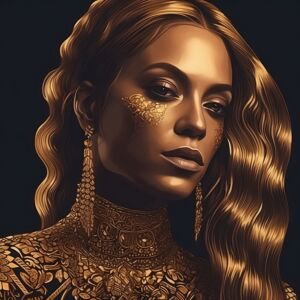

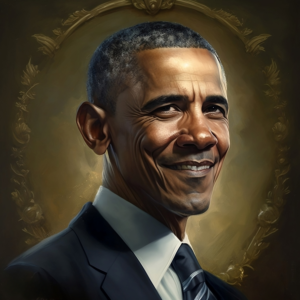
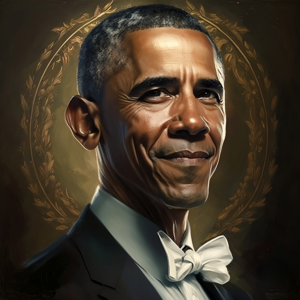
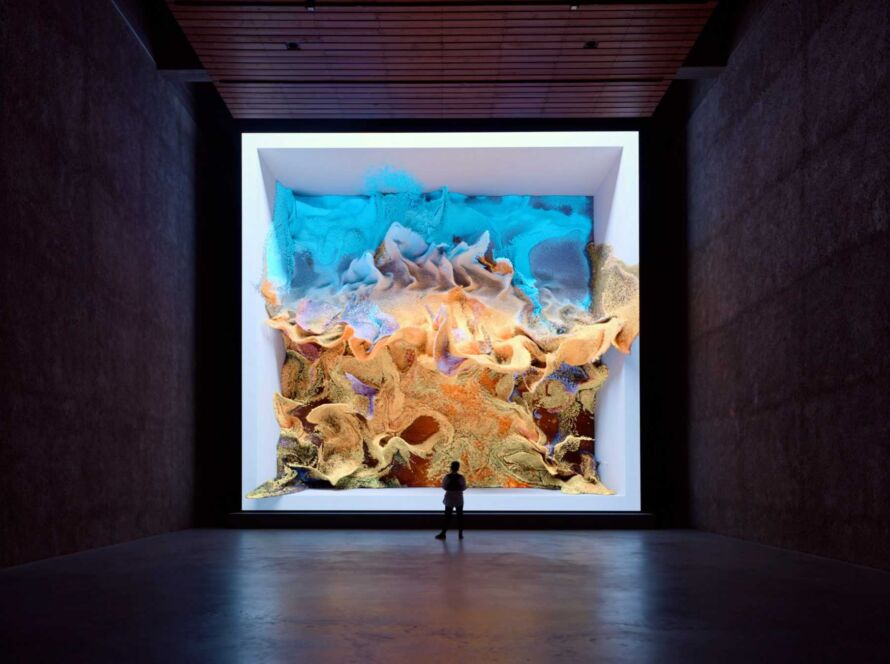
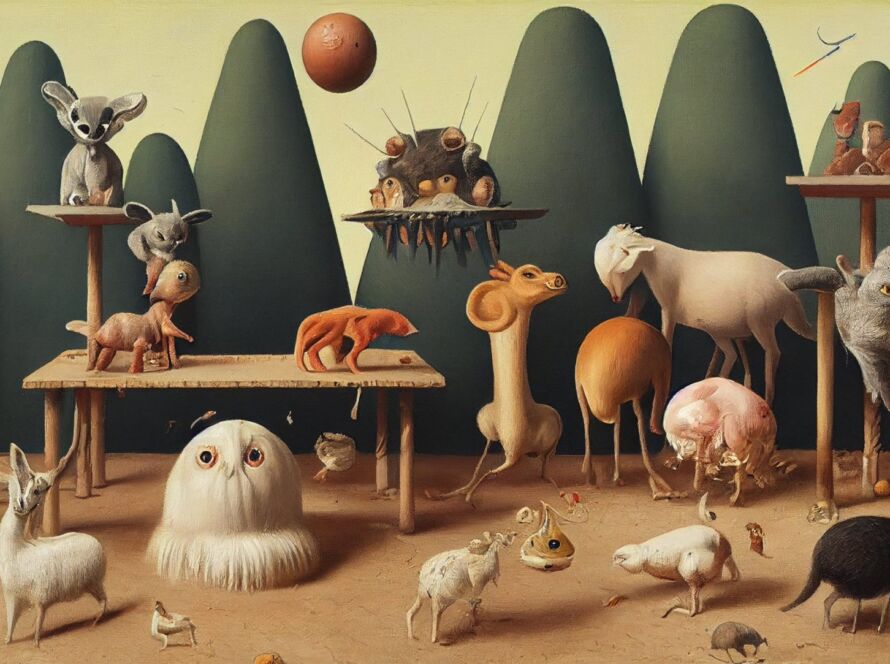
2 Comments